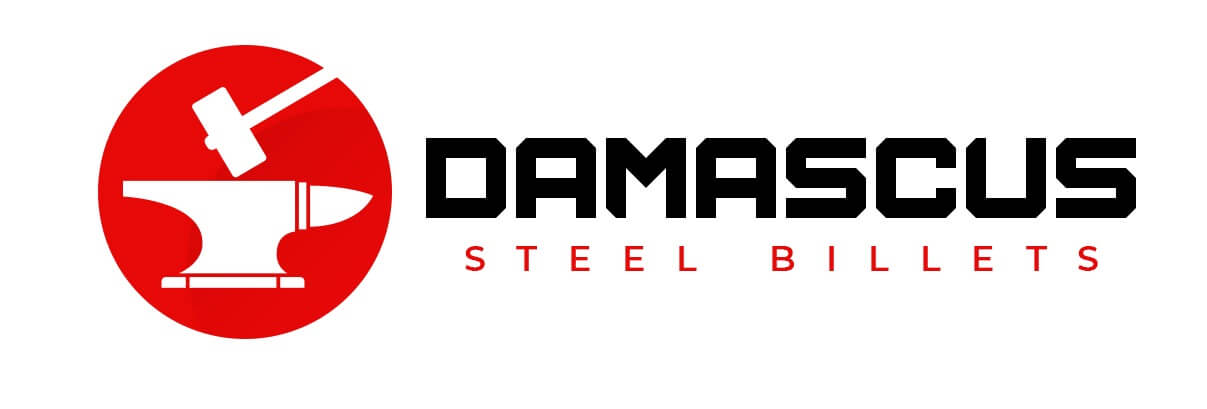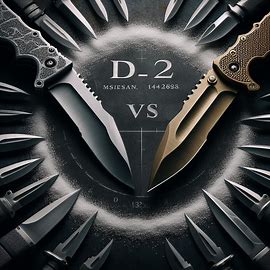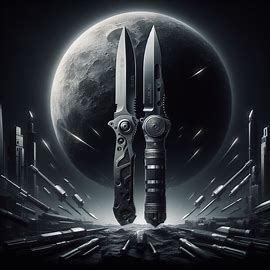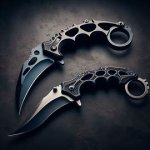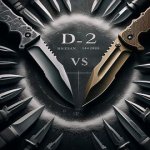There is a dizzying array of alternatives for knife steel. Out of all the options, two that stand out as popular choices are Aus 8 and D2 steel. These steels have their unique qualities. Here, we’ll closely examine Aus 8 vs D2 steel, two top-notch blade materials, and compare and contrast them.
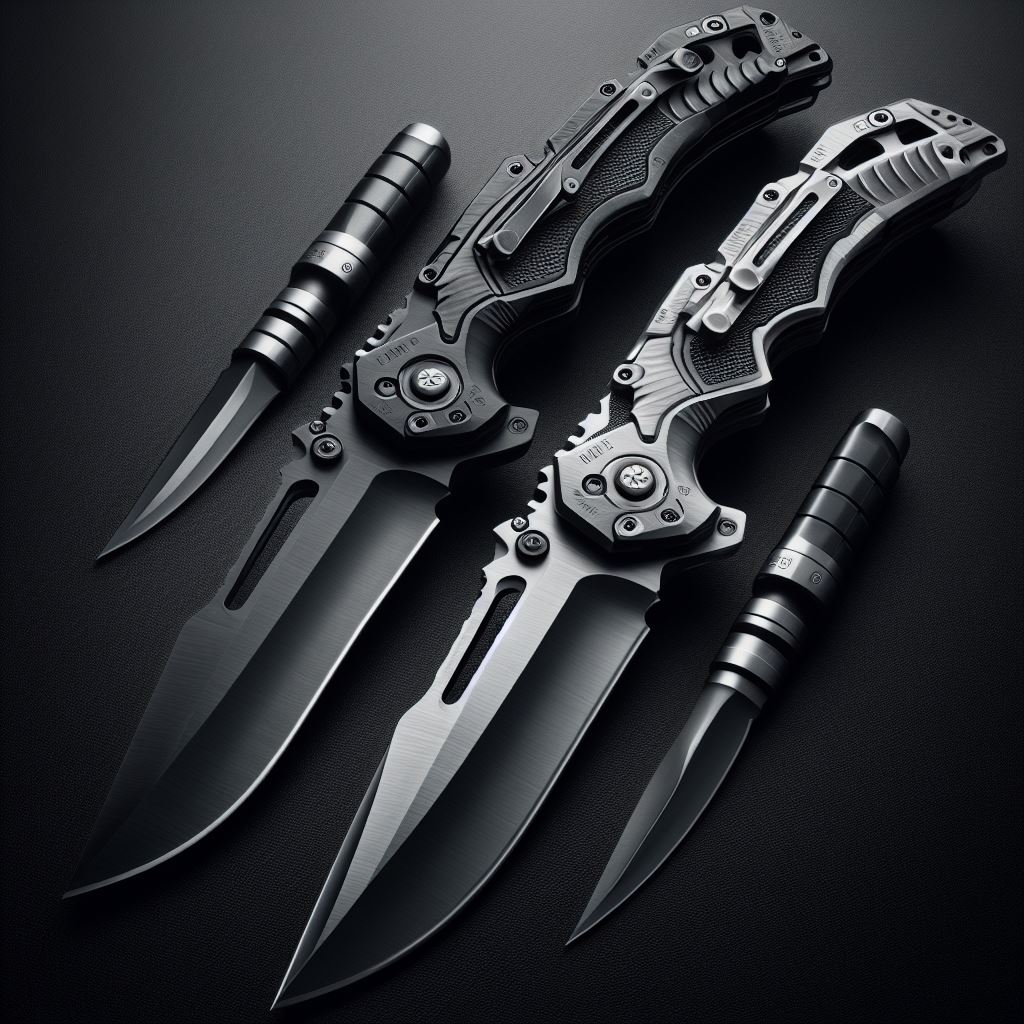
AUS 8 vs D2
Mastering the Art of Aus 8 Steel
Extensive research has shown that Aus 8 steel, a kind of stainless steel manufactured in Japan, has exceptional corrosion resistance and is very easy to sharpen. It balances sharpness and endurance with its composition of carbon (0.75-0.80%), manganese (1.00%), chromium (1.00-14.50%), nickel (0.49%), and vanadium (0.10-0.26%).
The Robust D2 Steel
D2 steel was originally used in tool steel production. Carbon (1.40-1.60%), chromium (10.00-13.00%), molybdenum (0.70-1.20%), vanadium (0.90%), and other elements make up D2, which is famous for its great wear resistance. D2 is a popular choice among those looking for a durable blade due to its construction.
The Key Distinctions
1. Hardness and Edge Retention:
The first advantage is that D2 steel has better edge retention than Aus 8 because of its greater hardness grade. When you need a blade that will stay sharp for a long time without having to resharpen it often, D2 can be the best option.
2. Corrosion Resistance:
The second advantage is that both steels are corrosion-resistant, but Aus 8 is much better. Because of its increased chromium concentration, it is more stainless and a good choice for things often exposed to damp or humid environments.
3. Toughness and Durability:
Aus 8 is often considered the toughest. Because of its composition, especially the nickel component, it is more resistant to chipping and fracture in demanding conditions, thanks to its greater toughness.
4. Sharpening Ease:
The ease of sharpening is a notable feature of Aus 8. Instead of the more difficult-to-sharpen D2 steel, Aus 8 would be a better choice if you want a blade requiring less sharpening.
AUS 8 vs D2
| Feature | Aus 8 Steel | D2 Steel |
| 1. Composition | Carbon (0.75-0.80%), Chromium (13.00-14.50%), Nickel (0.49%), Vanadium (0.10-0.26%) | Carbon (1.40-1.60%), Chromium (11.00-13.00%), Molybdenum (0.70-1.20%), Vanadium (0.90%) |
| 2. Origins | Japanese stainless steel | Tool steel, with roots in tool and die production |
| 3. Hardness | Lower hardness compared to D2 | Higher hardness, excellent edge retention |
| 4. Edge Retention | Good, but not as long-lasting as D2 | Excellent, superior edge retention |
| 5. Corrosion Resistance | High corrosion resistance | Moderate corrosion resistance |
| 6. Toughness | More resilient to chipping and breakage | Less toughness, may be prone to chipping |
| 7. Sharpening Ease | Easy to sharpen | Relatively harder to sharpen |
| 8. Suitability for EDC | Good for EDC due to ease of sharpening | Excellent for EDC, especially for edge retention |
| 9. Price Range | Often found in budget-friendly knives | Tends to be on the higher end of the price spectrum |
| 10. Machinability | Easy to machine | Moderate machinability |
| 11. Versatility | Versatile for a range of applications | Versatile, excelling in hardness and wear resistance |
| 12. Ease of Maintenance | Low maintenance, resistant to stains and rust | Requires regular maintenance to prevent corrosion |
| 13. Stain Resistance | Resistant to stains | Prone to staining, requires diligent cleaning |
| 14. Commonly Used in | Kitchen knives, budget-friendly folding knives | High-end folding and fixed-blade knives |
| 15. Manufacturing Process | Produced using traditional methods | Often manufactured using powder metallurgy (PM) |
| 16. Rust Resistance | High resistance to rust | Requires proper care to prevent rust |
| 17. Edge Stability | Stable, less prone to micro-chipping | Very stable, even during heavy use |
| 18. Elastic Modulus | Lower elastic modulus | Higher elastic modulus |
| 19. Resistance to Wear | Moderate resistance to wear | Excellent resistance to wear |
| 20. Impact Resistance | Good impact resistance | Moderate impact resistance |
| 21. Surface Finish | Accepts a variety of finishes | Can achieve a fine polished finish |
| 22. Knife Brands | Found in various budget and mid-range knives | Commonly used in premium and custom knives |
| 23. Ease of Sharpening in the Field | Easy to sharpen in the field | May require more effort in field sharpening |
| 24. Availability | Widely available | Readily available but more common in higher-end knives |
| 25. Suitable for Hunting Knives | Good choice for hunting knives | Excellent for hunting knives, given edge retention |
| 26. Handle Material Compatibility | Compatible with a variety of handle materials | May require more robust handle materials due to hardness |
| 27. Resilience to Extreme Temperatures | Good resistance to extreme temperatures | Maintains performance in extreme temperature conditions |
| 28. Cutting Performance | Reliable cutting performance | Consistent and prolonged cutting performance |
| 29. Sharpening Frequency | May require more frequent sharpening | Less frequent sharpening due to superior edge retention |
| 30. Ease of Field Maintenance | Easy to maintain in the field | Requires more attention in the field |
| 31. Resistance to Chipping | Resistant to chipping | May be prone to chipping in heavy use |
| 32. Edge Stability During Hard Use | Maintains edge stability during hard use | Excellent stability, even under heavy use |
| 33. Edge Geometry | Adapts well to various edge geometries | Allows for precise edge geometries |
| 34. Suitable for Survival Knives | Decent choice for survival knives | Excellent for survival knives, given toughness |
| 35. Maintenance in Humid Environments | Resistant to corrosion in humid environments | Requires careful maintenance in humid conditions |
| 36. Ease of Blade Customization | Easily customizable due to softer nature | Customization may require specialized tools |
| 37. Preferred by Custom Knife Makers | Less common among custom knife makers | Popular choice for custom knife makers |
| 38. Applications in Folding Knives | Suitable for budget-friendly folding knives | Commonly used in high-quality folding knives |
| 39. Potential for Patina Formation | Lower potential for patina formation | May develop a patina over time |
| 40. Ease of Machining for DIY Projects | Suitable for DIY projects due to machinability | May pose challenges in DIY projects due to hardness |
| 41. Blade Coating Compatibility | Accepts various coatings | Coating may adhere more effectively due to hardness |
| 42. Availability in Entry-Level Knives | Frequently found in entry-level knives | Rare in entry-level knives due to cost |
| 43. Knife Blade Thickness | Works well with various blade thicknesses | May be more versatile with thinner blade designs |
| 44. Heat Treatment Sensitivity | Less sensitive to heat treatment variations | Requires precise heat treatment for optimal performance |
| 45. Blade Stiffness | Moderately stiff blade | Relatively stiff blade |
| 46. Knife Blade Flexibility | Offers more flexibility in the blade | Less flexible, providing stability |
| 47. Maintenance in Saltwater Environments | Resistant to corrosion in saltwater conditions | Requires diligent care to prevent saltwater corrosion |
| 48. Shear Strength | Moderate shear strength | Higher shear strength, providing durability |
| 49. Suitable for Combat/ Tactical Knives | Good choice for combat knives | Excellent for combat/tactical knives due to hardness |
| 50. Ease of Blade Repair | Relatively easier to repair due to softer nature | May pose challenges in repairing due to hardness |
FAQS
Which steel is better for everyday carry knives?
Which knife is best for daily carry is a matter of taste. A more realistic option may be Aus 8 if corrosion resistance and simplicity of sharpening are important. But D2 could be the way to go if you’re concerned about long-term edge retention.
Are there budget considerations?
For individuals looking for quality without breaking the bank, Aus 8 is a great option, as it is commonly found in more affordable knives. However, because of its exceptional qualities, D2 steel blades tend to be more expensive.
Does the intended use impact the choice between Aus 8 and D2?
In a word, yes. The D2 is the way to choose if you’re using your knife for long periods and care about keeping the edge. Aus 8 has more uses and is easier to maintain for everyday utility jobs.
Final Thoughts: Picking the Perfect Blade
There is no universally correct response to whether D2 or Aus 8 steel is better. Your pick should be based on your tastes, needs, and budget. Knowing the differences between Aus 8 and D2 steel can help you choose the perfect knife for your needs, whether that’s resistance to corrosion and ease of sharpening or high levels of hardness and edge retention.
